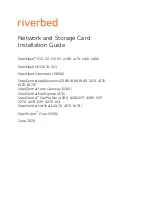
16-Bit-Wide Memory Interface
10-26
10.7 16-Bit-Wide Memory Interface
The ’C32 memory interface to 16-bit-wide external memory uses STRBx_B3 pin
as an additional address pin, A
–1
, while using STRBx_B0 and STRBx_B1 as
strobe byte-enable pins as shown in Figure 10–14. Note that the external-
memory address pins are connected to the ’C32 address pins A
22
A
21
...A
1
A
0
A
–
1
.
In this manner, the ’C32 can read/write a single 32-, 16-, or 8-bit value from the
external 16-bit-wide memory.
Figure 10–14. External-Memory Interface for 16-Bit SRAMs
A
23
A
22
A
21
.
.
.
A
1
A
0
STRBx_B3/A
–1
R/W
A23
A22
.
.
.
A2
A1
A0
WE
CS
I/O(7-
0)
A23
A22
.
.
.
A2
A1
A0
WE
CS
I/O(7-
0)
’C32
STRBx_B2
STRBx_B1
STRBx_B0
D(31-24)
D(23-16)
D(15-8)
D(7-0)
Case 4: 16-Bit-Wide Memory With 8-Bit Data-Type Size
When the data type size is 8 bits, the ’C32 shifts the internal address two bits
to the right before presenting it to the external-address pins. In this shift, the
memory interface copies the value of the internal-address A
23
to the external-
address pins A
23
, A
22
, and A
21
. The memory interface also copies the value
of the internal-address A
1
to the external STRBx_B3/ A
–1
pin. Furthermore, the
memory interface activates the STRBx_B1 and STRBx_B0 pins according to
the value of the internal address bit A
0
as shown in Table 10–10. Figure 10–15
shows a functional diagram of the memory interface for 16-bit-wide memory
with 8-bit data-type size.















































